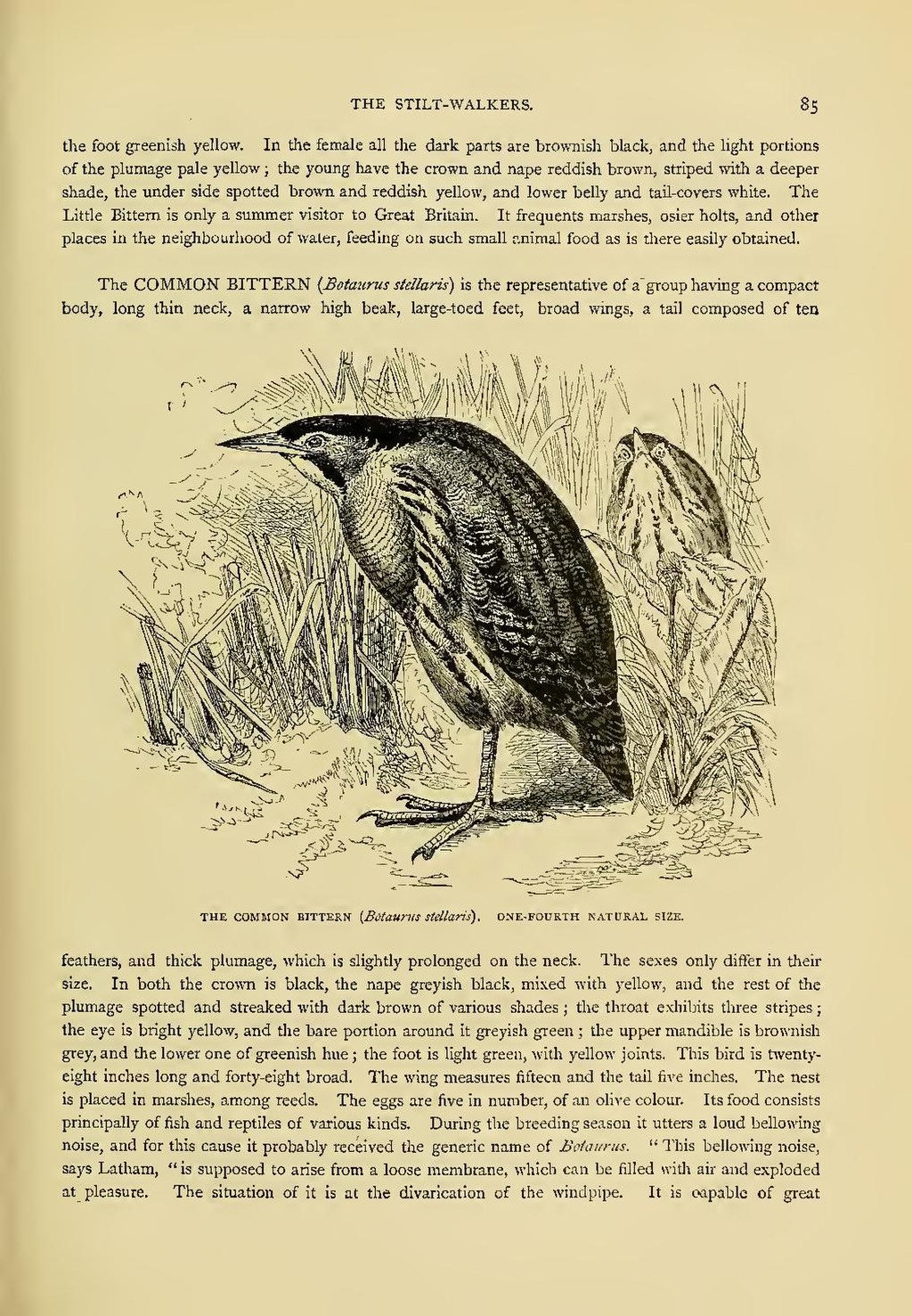the foot greenish yellow. In the female all the dark parts are brownish black, and the light portions of the plumage pale yellow; the young have the crown and nape reddish brown, striped with a deeper shade, the under side spotted brown and reddish yellow, and lower belly and tail-covers white. The Little Bittern is only a summer visitor to Great Britain. It frequents marshes, osier holts, and other places in the neighbourhood of water, feeding on such small animal food as is there easily obtained.
An image should appear at this position in the text. To use the entire page scan as a placeholder, edit this page and replace "{{missing image}}" with "{{raw image|Cassell's book of birds (IA cassellsbookofbi04breh).pdf/105}}". Otherwise, if you are able to provide the image then please do so. For guidance, see Wikisource:Image guidelines and Help:Adding images. |
THE COMMON BITTERN (Botaurus stellaris). ONE-FOURTH NATURAL SIZE.
The COMMON BITTERN (Botaurus stellaris) is the representative of a group having a compact body, long thin neck, a narrow high beak, large-toed feet, broad wings, a tail composed of ten feathers, and thick plumage, which is slightly prolonged on the neck. The sexes only differ in their size. In both the crown is black, the nape greyish black, mixed with yellow, and the rest of the plumage spotted and streaked with dark brown of various shades; the throat exhibits three stripes; the eye is bright yellow, and the bare portion around it greyish green; the upper mandible is brownish grey, and the lower one of greenish hue; the foot is light green, with yellow joints. This bird is twenty-eight inches long and forty-eight broad. The wing measures fifteen and the tail five inches. The nest is placed in marshes, among reeds. The eggs are five in number, of an olive colour. Its food consists principally of fish and reptiles of various kinds. During the breeding season it utters a loud bellowing noise, and for this cause it probably received the generic name of Botaurus. "This bellowing noise, says Latham, "is supposed to arise from a loose membrane, which can be filled with air and exploded at pleasure. The situation of it is at the divarication of the windpipe. It is capable of great
